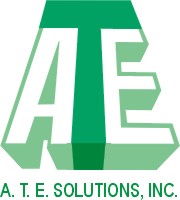Electronics Manufacturing Technical Articles
Papers and articles related to SMT, PCB & EMS industry.
- SMTnet
- »
- Technical Library
1757 SMT / PCB Assembly Related Technical Articles

Flex (Flextronics International)
Flextronics is a global full-service supplier of a full spectrum of value-added Electronic Manufacturing Services.
Singapore, Singapore

Since 1871, Continental develops intelligent technologies for transporting people and their goods.
Hannover, Germany

3M's Electronics and Energy segment serves customers in electronics and energy markets, including solutions for dependable, cost-effective, high-performance electronic devices.
St. Paul, Minnesota, USA

We develop produce and supply innovative cost effective thermal control units to major Semiconductor Devices Manufacturers to test IC devices -LOW & HIGH Power devices for temp range -65°C to +200°C.
Haifa, Israel

CALCE Center for Advanced Life Cycle Engineering
The largest electronic products research center focused on electronics reliability, is dedicated to providing a knowledge and resource base to support the development of competitive electronic components, products and systems.
College Park, Maryland, USA

A leader in software solutions for electroncs design, Mentor Graphics is the only EDA company with a total end-to-end solution for design though manufacturing.
Wilsonville, Oregon, USA

Flex (Flextronics International)
Flextronics is a global full-service supplier of a full spectrum of value-added Electronic Manufacturing Services.
Singapore, Singapore

The leading Test, ATE and Testability consulting and educational firm, offering various test related courses. Maintains the BestTest Directory, a test community knowledge base. Publishes The BestTest eNewsletter.
Los Angeles, California, USA
Consultant / Service Provider, Manufacturer, Training Provider

A leader in software solutions for electroncs design, Mentor Graphics is the only EDA company with a total end-to-end solution for design though manufacturing.
Wilsonville, Oregon, USA
Pages: 1 2 3 4 5 6 7 8 9 10 11 12 13 14 15 16 17 18 19 20 21 22 23 24 25 26 27 28 29 30 31 32 33 34 35 36 37 38 39 40 41 42 43 44 45 46 47 48 49 50 51 52 53 54 55 56 57 58 59 60 61 62 63 64 65 66 67 68 69 70 71 72 73 74 75 76 77 78 79 80 81 82 83 84 85 86 87 88 89 90 91 92 93 94 95 96 97 98 99 100 101 102 103 104 105 106 107 108 109 110 111 112 113 114 115 116 117 118 119 120 121 122 123 124 125 126 127 128 129 130 131 132 133 134 135 136 137 138 139 140 141 142 143 144 145 146 147 148 149 150 151 152 153 154 155 156 157 158 159 160 161 162 163 164 165 166 167 168 169 170 171 172 173 174 175 176









